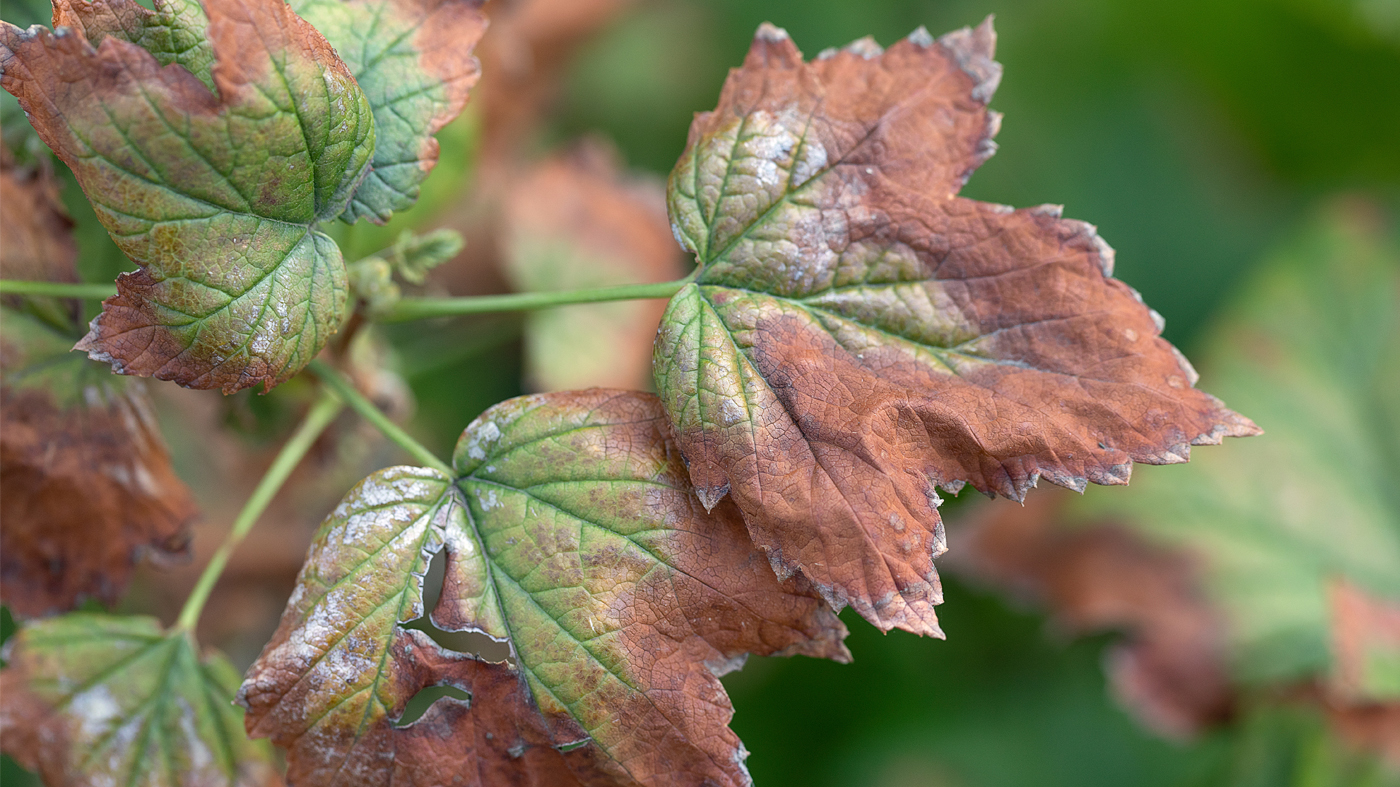
Susceptible Plants
Ash (Fraxinus), catalpa (Catalpa), Kentucky coffee tree (Gymnocladus), dogwood (Cornus), elm (Ulmus), lilac (Syringa), linden (Tilia), maple (Acer), oak (Quercus), redbud (Cercis), tuliptree (Liriodendron) and many others.
Description & Symptoms
Verticillium wilt is a soil-borne fungal disease that plugs the vascular system of woody plants. Symptoms include wilting leaves, often along a single branch. In acute cases, leaves curl and wilt, and the branch dies. Scattered dieback of branches may occur over several years. In chronic cases, branches survive but growth is slow and leaves are small and sparse. Both acute and chronic symptoms can appear on the same plant. The sapwood of an infected branch may contain dark streaks. To check for this symptom, cut a cross-section of a thumb-sized branch and look for darkened tissue immediately under the bark.
Timing & Life Cycle
Once taken up by a plant, spores germinate and grow inside the xylem (water-conducting tissue), blocking the movement of water beyond the growth. Fungal spores live in the soil and enter plants through the roots. Infection occurs most frequently in cool to warm weather. Incidence of disease subsides during hot weather. The fungus survives in the soil for many years.
Damage
With careful watering and pruning, most plants survive verticillium wilt. Severely infected plants with widespread wilting and branch dieback may not survive.
Treatment & Solutions
The verticillium wilt fungus cannot be eradicated from the soil, and fungicidal treatment of infected plants is ineffective. Wilted branches should be pruned out. Severely infected trees and shrubs should be removed. Pruners must be disinfected between cuts with a mild bleach/water solution to avoid spreading the disease to healthy tissue. Avoid overfertilizing plants as succulent, new growth is particularly susceptible to infection. Use resistant plants when replacing a tree killed by verticillium wilt.
For a list of trees that are less susceptible to verticillium wilt, please contact Plant Information Services at (847) 835-0972 or email.

